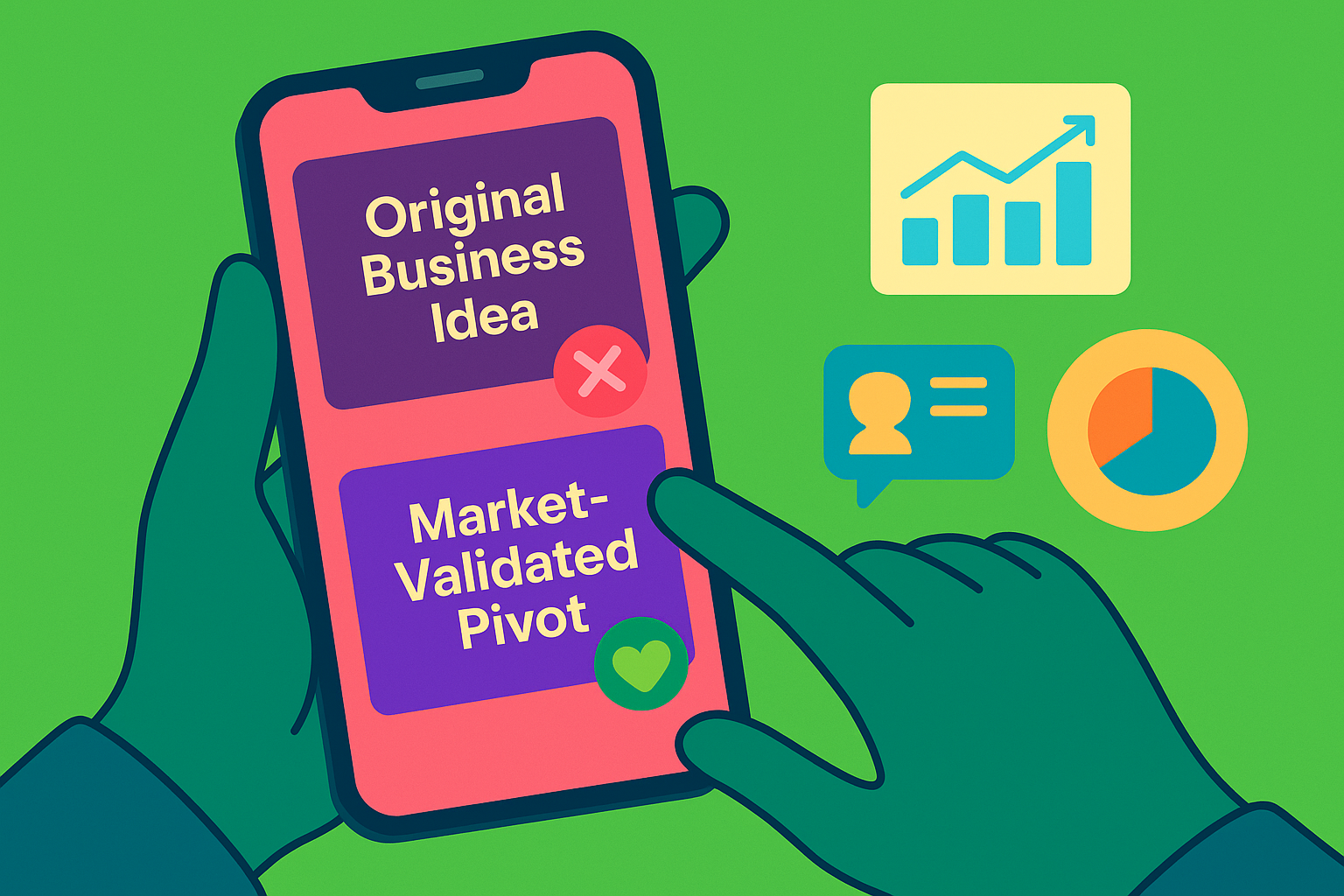
What is a Pivot? (And Why It's Not Just Changing Your Mind)
You built the product, launched to silence, and now your team is eyeing a wild new direction. Is it time to pivot or just panic? The answer could make or break your startup.


You built the product, launched to silence, and now your team is eyeing a wild new direction. Is it time to pivot or just panic? The answer could make or break your startup.

You've probably heard the word "pivot" thrown around in startup circles like confetti at a tech conference. But what does it actually mean? And more importantly, how do you know when you need one?
Let's break it down in simple terms that won't make your head spin.
First things first – let's clear up a common misconception. A pivot isn't just deciding you want to add a new feature or switch up your marketing strategy. It's not changing your mind because you saw a cool app and thought "we should do that too!"
A real pivot is a fundamental change to your business based on what the market and your data are telling you. It's like realizing you've been trying to sell ice cream in Antarctica – sometimes you need to completely change direction based on what you've learned.
Here's what separates a true pivot from just changing your mind:
Market-Driven: Your customers (or lack thereof) are telling you something important. Maybe they're not using your app the way you expected, or they're asking for something completely different.
Data-Backed: You have actual numbers and feedback showing that your current approach isn't working. This could be low user engagement, poor sales, or feedback that consistently points in a new direction.
Strategic: The change aligns with a bigger business opportunity that you've discovered through research and testing.
Customer Segment Pivot: You keep the same product but target completely different customers. Maybe your meditation app designed for busy executives actually works better for college students.
Problem Pivot: You realize your target customers have a different problem than what you're solving. Your meal planning app users actually need grocery delivery more than recipes.
Solution Pivot: You keep the same problem but completely change how you solve it. Instead of an app, maybe your customers need a service.
Platform Pivot: Switching from mobile application to web application, or vice versa, based on how users actually want to interact with your product.
Your MVP Isn't Getting Traction: You've built your minimum viable product, put it in front of real users, and... crickets. Or worse, people try it once and never come back.
Customers Love One Small Feature: Everyone ignores 90% of your app but goes crazy for one tiny feature. That might be your real business right there.
You Keep Hearing the Same Feedback: If multiple customers are saying "this is nice, but what I really need is..." – pay attention.
The Market Has Changed: Sometimes external factors completely shift what people need or want.
Analyze Your Data: Look at your analytics, user feedback, and sales numbers. What story are they telling?
Talk to Your Users: Get on calls with customers who stopped using your product. Ask them what they really need.
Test Small: Before you rebuild everything, test your pivot hypothesis with prototypes or small experiments.
Update Your Roadmap: Once you're confident in the direction, update your plans and communicate clearly with your team and investors.
Twitter started as a podcast platform called Odeo. When iTunes launched, they pivoted to the microblogging platform we know today.
Instagram began as Burbn, a location-based check-in app with photo sharing features. They realized users only cared about the photos.
Slack was originally a gaming company that built an internal communication tool. The tool became more valuable than the game.
Remember, constantly changing direction isn't pivoting – it's just being indecisive. Real pivots are:
Don't pivot just because things are hard or because you saw a competitor doing something cool. Stick with your original plan long enough to gather real data before making major changes.
A good pivot can save your startup. A bad pivot (or fake pivot) can kill it. The key is knowing the difference and making sure any major change is driven by what your market actually wants, not just what sounds exciting in the moment.
Ready to make sure your product decisions are data-driven and strategic? Get in touch with us for expert guidance on navigating pivots and building products that actually solve real problems.